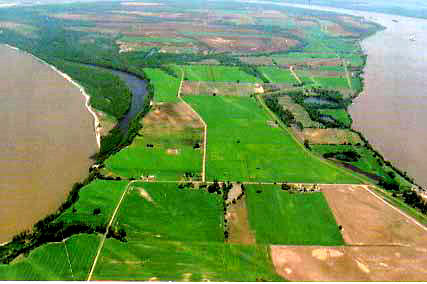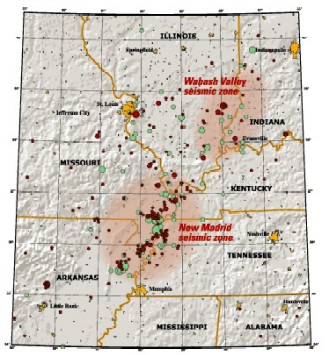
Map of the New Madrid and Wabash Valley seismic zones. Red circles indicate earthquakes that occurred from 1974 to 2002 with magnitudes larger than 2.5 (University of Memphis).
Green circles denote earthquakes that occurred prior to 1974. Larger earthquakes are represented by larger circles.
From USGS Fact Sheet 131-02, "Earthquake Hazard in the Heart of the Homeland"
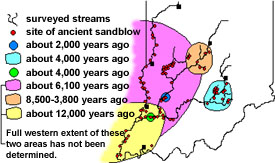
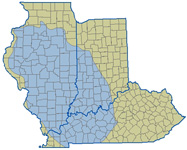
Left image: Indiana quakes
Right: Illinois Basin (has lots of shale oil potential)
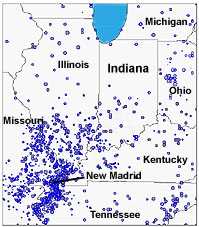
1800-1995 quakes - click map for Indiana Geological Survey site.
Wabash and NM faults map
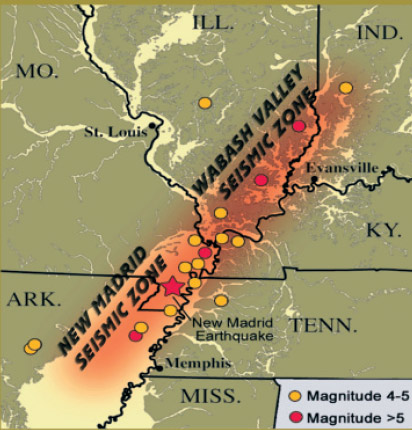
Meers fault in Oklahoma
Oklahoma is "riddled with faults" according to seismologist Andrew Holland. The Meers fault is the only place in the Sooner state where a fault line is visible. It's a straight line for almost 50 miles, near Lawton. Some 15 miles is clearly visible from the air. If you're in the neighborhood, visit the Meers store, with unusual storefront, specialty hamburgers and $2 ribeyes over a campfire. This place has a seismograph that is unusually sensitive to measuring quakes in the Indian Ocean, Russian missile tests, on almost the exact other side of the earth, but local US military base activity doesn't bother.
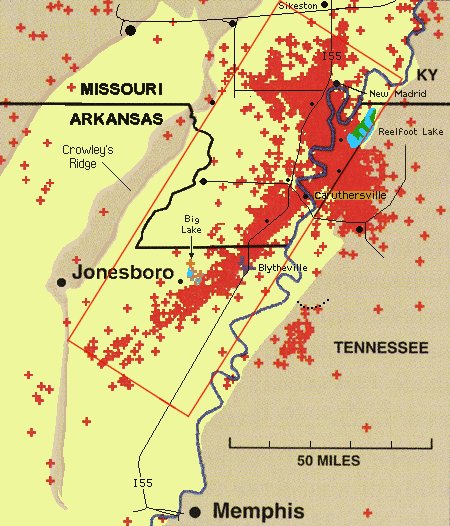
The New Madrid fault system contains two types of faults, a strike slip segment oriented to the northeast, running from Marked Tree, AR to Caruthersville, MO, and a northwest trending reverse fault that rests below the New Madrid region. Material on the northwest side of the strike-slip fault moves northeast, and up the ramp. --St. Louis U.
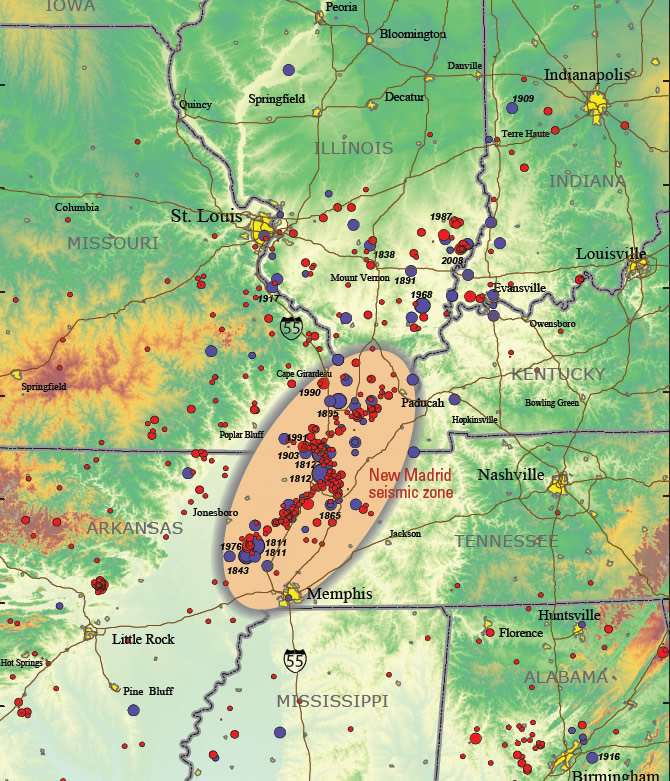
http://geology.com/usgs/new-madrid-seismic-zone/ contains image above
http://pubs.usgs.gov/fs/2009/3071/ image original source, info of prev. quakes
http://www.emporia.edu/earthsci/student/smotherman2/globaltect2.htm Good!! Missouri geology, formation
Considerable interest has developed recently from media reports that the New Madrid seismic zone may be shutting down. These reports stem from published research using global positioning system (GPS) instruments with results of geodetic measurements of strain in the Earth’s crust. Because of a lack of measurable strain at the surface in some areas of the seismic zone over the past 14 years, arguments have been advanced that there is no buildup of stress at depth within the New Madrid seismic zone and that the zone may no longer pose a significant hazard.
As part of the consensus-building process used to develop the national seismic hazard maps, the U.S. Geological Survey convened a workshop of experts in 2006 to evaluate the latest findings in earthquake hazards in the Eastern United States. These experts considered the GPS data from New Madrid available at that time that also showed little to no ground movement at the surface. The experts did not find the GPS data to be a convincing reason to lower the assessment of earthquake hazard in the New Madrid region, especially in light of the many other types of data that are used to construct the hazard assessment.
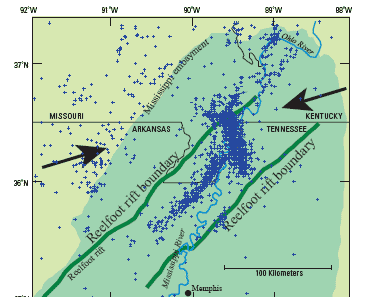
The earthquake activity roughly parallels the Reelfoot rift, an ancient break in the Earth's crust. Millions of years ago the crust began to pull apart, or rift, but failed to break completely as happens when new plate boundaries form. Instead, a long shear zone of intense faulting formed. Today the crust is being compressed in the direction shown by the arrows. Much of the seismic zone is buried beneath the Mississippi embayment (darker green area), a trough filled with sediments that may greatly amplify earthquake shaking.
http://pubs.usgs.gov/fs/fs-0007-02/fs-0007-02.pdf
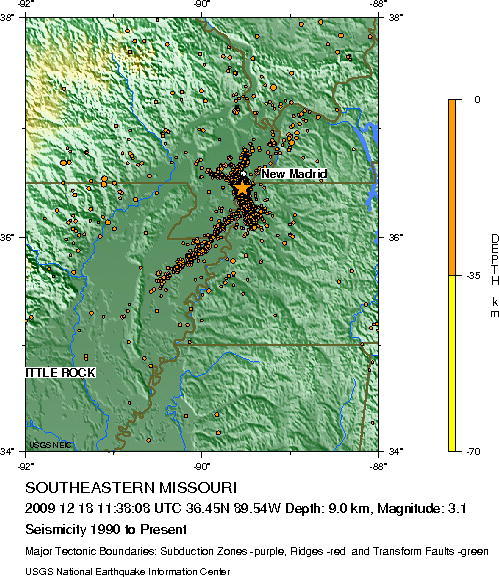
The Mississippi Embayment is shown in maps above and below. It is a finger of the Gulf of Mexico that extended to about Cairo IL for awhile. Note Crowley's Ridge above. The Mississippi River ran west of it during the first part of the ice age. An older path of the Ohio River is visible in above, just east of Cape Girardeau.
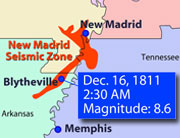
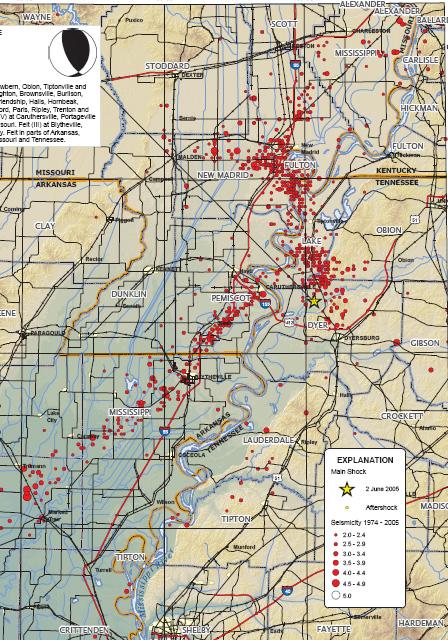
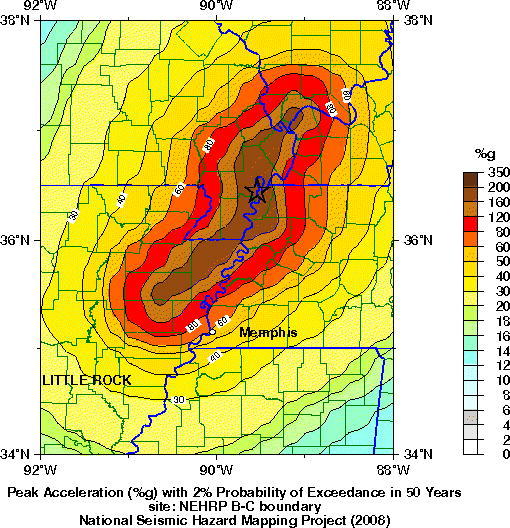
taken from a report on a Dec 18, 2009 - 3.1 magnitude event near Point Pleasant MO.
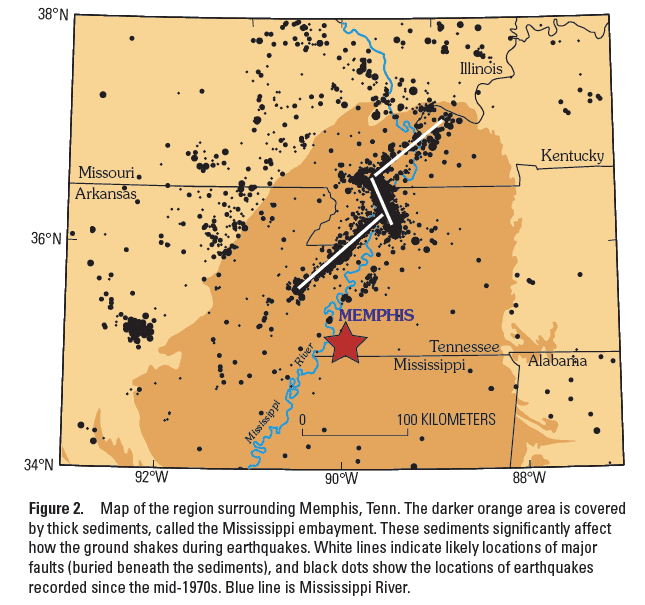
The New Madrid Seismic Zone has seven segments.
Four earlier prehistoric earthquakes or earthquake sequences have been dated
A.D. 1450 ± 150,
900 ± 100,
300 ± 200,
and 2350 B.C. ± 200 years
The two most recent prehistoric and the 2350 B.C. events were probably also earthquake sequences with approximately the same magnitude as the historic sequence.
Seven fault segments are recognized by micro seismicity and geomorphology. Surface faulting has been recognized at three of these segments, Reelfoot fault, New Madrid North fault, and Bootheel fault. Deformation at each of the fault segments does not occur during each earthquake event, indicating that earthquake sources have varied throughout the Holocene.
--Margaret Guccione, Science Direct, 2002-2005
Southeast Missouri earthquake hazard map - MO DNR
all the Bootheel, confluence of Missouri and Mississippi
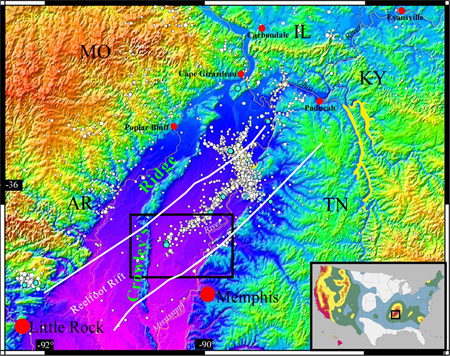
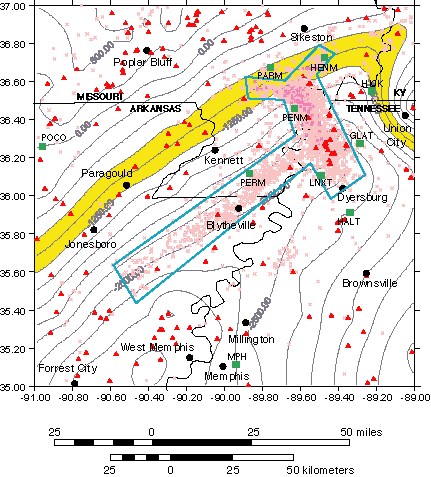
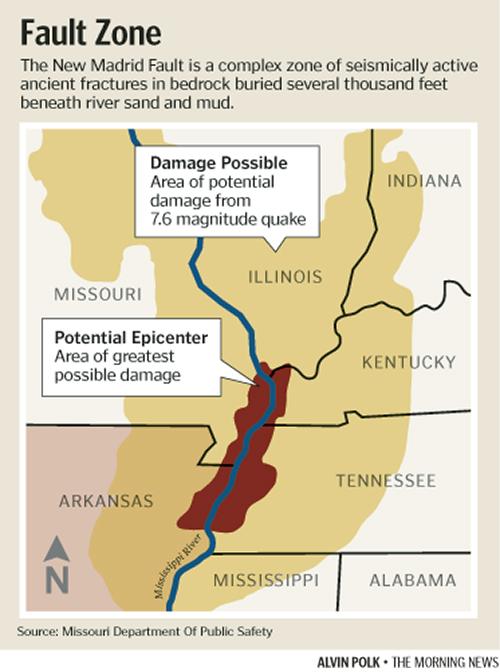
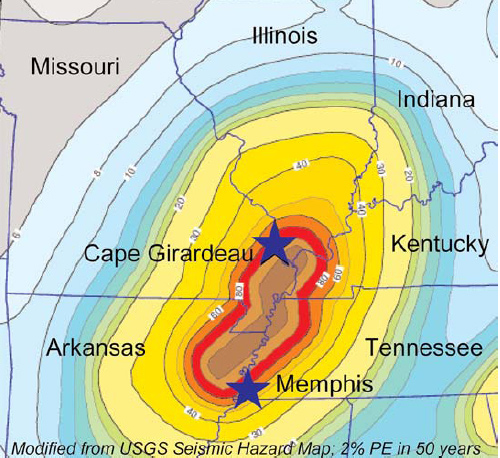
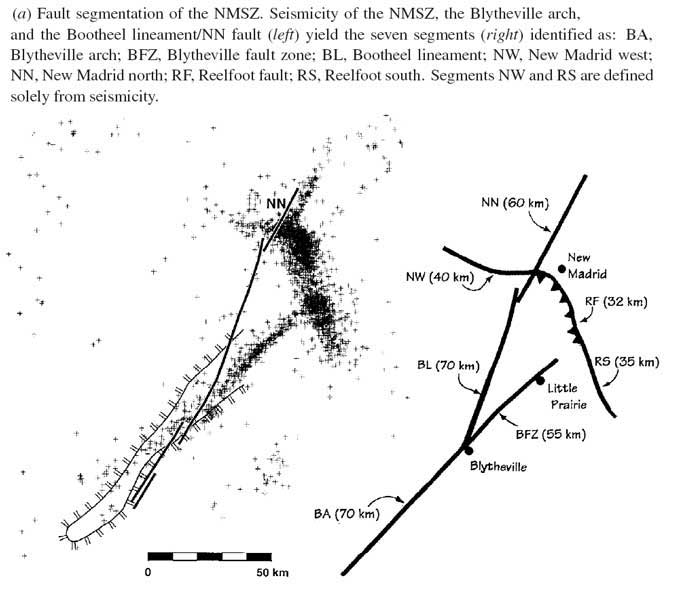
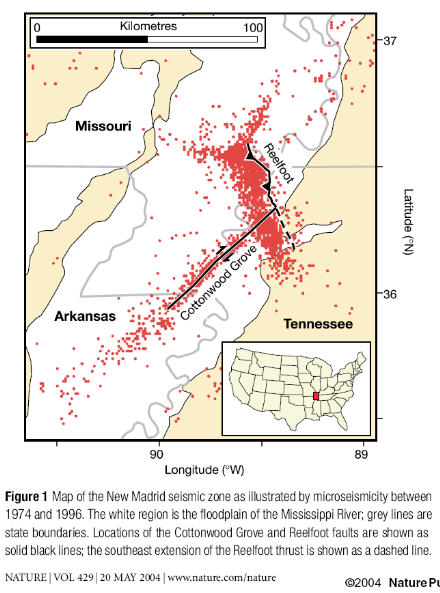
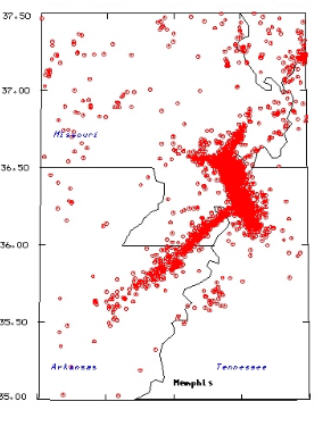
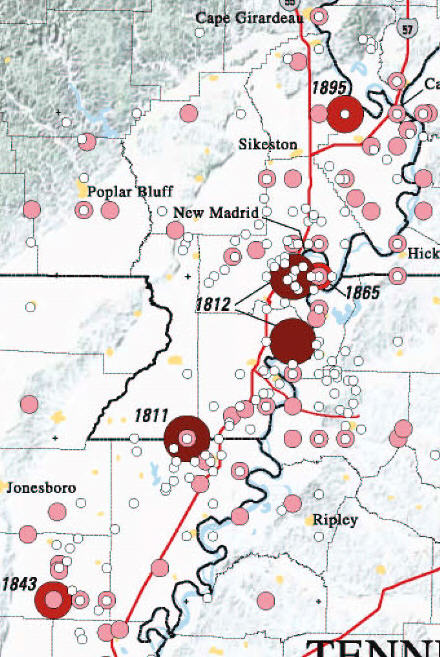
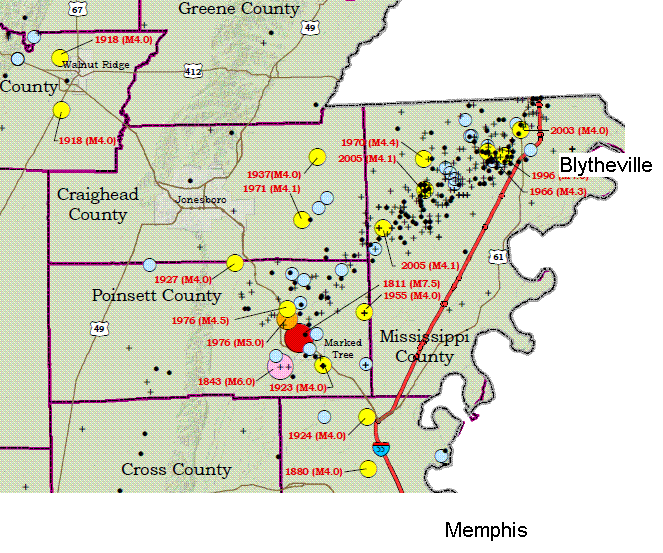
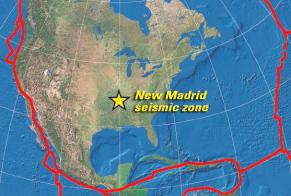
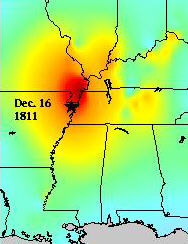

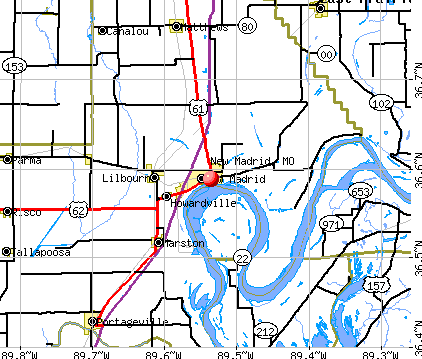
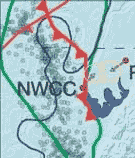 Toward the bottom of the Mississippi River's New Madrid loop, the river level is about 10 feet higher on the east (right) than on the west. The distance across the neck of the loop is just under a mile. The land is generally 30 feet higher than the river. It is called the "
Toward the bottom of the Mississippi River's New Madrid loop, the river level is about 10 feet higher on the east (right) than on the west. The distance across the neck of the loop is just under a mile. The land is generally 30 feet higher than the river. It is called the "